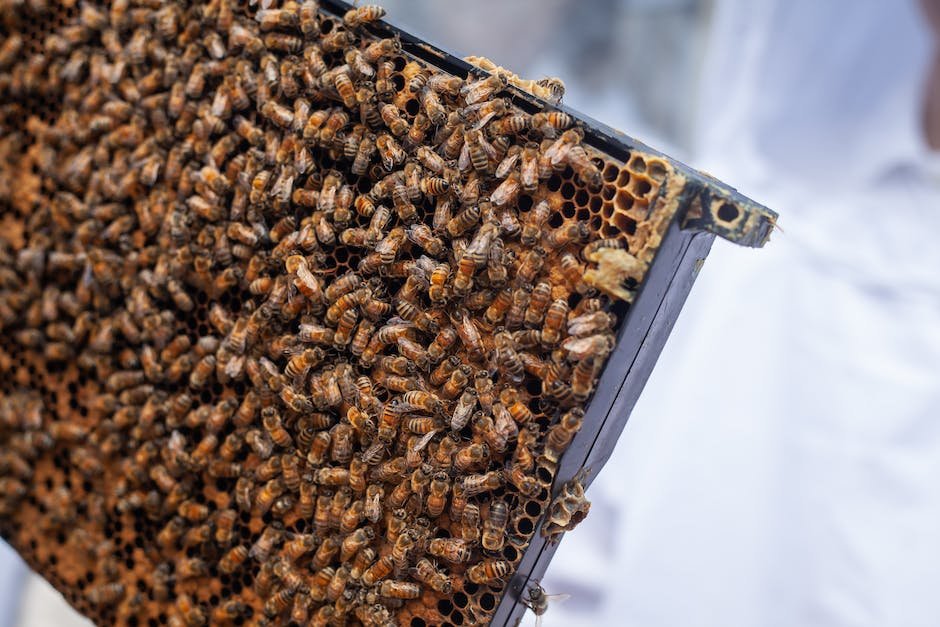In the enchanting realm of beekeeping, where bustling colonies thrive and nature’s sweet nectar flows, the queen bee reigns supreme. With her presence paramount for hive vitality, it becomes a beekeeper’s duty to carefully identify and track their royal highness. Enter the humble queen marking kit – a magical tool that unlocks the ability to gracefully adorn this noble leader with a tiny, color-coded mark. Join us on a journey through the labyrinth of beekeeping artistry, as we uncover the secrets of this indispensible tool and empower you to leave your mark on the queen bee with finesse and confidence.
Table of Contents
- Introduction: Understanding the Purpose and Importance of Queen Marking
- Identifying the Different Colors: A Comprehensive Overview of Queen Marking Codes
- Preparing the Queen: Step-by-Step Guide to Safely Marking Your Queen Bee
- Harnessing the Advantages: Benefits of Queen Marking for Beekeeping Management
- Recommendations and Best Practices: Enhancing Queen Marking Accuracy and Efficiency
- Q&A
- The Conclusion

Introduction: Understanding the Purpose and Importance of Queen Marking
Have you ever wondered how beekeepers are able to identify their queen bees among thousands of worker bees? The answer lies in the practice of queen marking, a technique that involves adding a small dot of colored paint to the queen’s thorax. This simple yet crucial step plays a vital role in beekeeping, allowing beekeepers to easily locate and track their queen bee throughout the hive.
The purpose of queen marking extends beyond mere identification. By marking the queen, beekeepers can monitor her performance and health. It provides valuable information about her age, mating status, and mating quality, allowing beekeepers to make informed decisions about the overall health and productivity of their colony. Furthermore, queen marking facilitates the identification of queen cells, assisting the beekeeper in managing the process of swarming and colony reproduction.
Understanding the importance of queen marking is essential for any novice or experienced beekeeper. It enables responsible hive management, helps maintain genetic diversity within the hive, and enhances the overall stability of the bee colony. In the following sections, we will delve deeper into the techniques and considerations involved in queen marking, empowering you to confidently mark and manage your queen bees.

Identifying the Different Colors: A Comprehensive Overview of Queen Marking Codes
Queen marking is an essential practice in beekeeping that involves painting a small colored dot on the thorax of the queen bee. These markings help beekeepers quickly identify and track individual queens within the hive, making management tasks easier. A comprehensive understanding of queen marking codes is vital for all beekeepers, especially those venturing into commercial beekeeping or queen breeding.
Understanding the Colors:
The International Queen Marking Color Code provides a standardized system for identifying the age of the queen and the year she was marked. By observing the color of the dot, beekeepers can determine the approximate age of the queen. Here’s a breakdown of some commonly used colors:
- White: This color signifies that the queen was marked in the current year. It helps beekeepers distinguish recently mated and young queens.
- Yellow: Queens marked with yellow indicate they were bred in the previous year. This color helps identify queens that have successfully overwintered.
- Green: Green markings are typically used for queens that are two years old. It is crucial to monitor these queens closely as they may start to decline in productivity.
- Blue: Blue markings indicate queens that are three years or older. These queens are nearing the end of their productive lifecycle, and beekeepers may consider replacing them.
It’s important to note that these colors may vary slightly depending on regional preferences or personal beekeeping associations. Therefore, it is recommended to consult local resources and guidelines for accurate queen marking color codes.
Practice and Benefits:
Mastering queen marking codes requires practice and attention to detail, but the benefits are unquestionable. Through efficient queen identification, beekeepers can track the performance and health of individual queens, assess colony dynamics, and make informed management decisions. This practice is particularly advantageous when conducting hive inspections, performing queen replacements, or evaluating the success of queen mating.

Preparing the Queen: Step-by-Step Guide to Safely Marking Your Queen Bee
Preparing the Queen: Safely Marking Your Queen Bee
Marking your queen bee is an essential task for beekeepers to easily identify the queen within a colony. This step-by-step guide will walk you through the process of safely marking your queen bee.
Step 1: Gather the necessary materials
Before starting the marking process, it’s important to make sure you have all the required tools and materials ready:
- A marking pen specifically designed for bees
- A queen marking tube or cage
- A catching clip or tool to gently secure the queen
- A soft, clean surface to safely handle the queen
Step 2: Find the queen
Locating the queen bee can sometimes be a challenge, but it’s essential to proceed with caution and patience. Inspect the frames and look for her distinct long body, smooth abdomen, and attendants surrounding her. Once you spot her majesty, it’s time to proceed to the next step.
Step 3: Safely mark the queen
Gently catch the queen using the catching clip or tool, being careful not to harm her delicate body. Place her into the queen marking tube or cage, ensuring she is secure but has enough space to move comfortably. Hold the marking pen gently against her thorax and apply a small dot of color, taking care not to cover her breathing holes. Allow the mark to dry for a few seconds before carefully releasing her back into the hive.
Following these steps and using appropriate techniques will ensure that you can easily identify your queen bee while minimizing any potential harm or stress to her. Remember, a calm and confident approach will help achieve the desired results smoothly.
Harnessing the Advantages: Benefits of Queen Marking for Beekeeping Management
In the world of beekeeping, one essential practice that stands out is the art of queen marking. This technique involves the careful application of a small colored dot to the queen bee’s thorax, which serves as a visible identification mark for beekeepers. While seemingly simple, queen marking holds numerous benefits that greatly contribute to effective beekeeping management.
First and foremost, queen marking facilitates easy identification of the queen bee within a bustling hive. With a quick glance at the marked queen, beekeepers can swiftly distinguish her from the worker bees, ensuring they can effortlessly locate and assess her health and productivity. This visual aid saves valuable time and prevents unnecessary disturbances to the hive’s delicate balance.
Furthermore, queen marking is crucial for record-keeping and research purposes. By assigning a distinct color code to each year, beekeepers can effortlessly track a queen’s age, lineage, and overall performance. This invaluable data assists in making informed decisions regarding breeding programs, assessing genetic diversity, and monitoring the overall health of the bee colony. Researchers, too, benefit from queen marking as it provides an easy way to identify specific queens for data collection and analysis.
- Easier identification: Queen marking allows beekeepers to quickly locate and assess the queen’s health.
- Efficient record-keeping: The color-coded marking system aids in tracking a queen’s age, lineage, and performance.
- Research support: Queen marking facilitates data collection and analysis for researchers studying bee colonies.
In conclusion, queen marking is a simple yet powerful tool that enhances beekeeping management in numerous ways. From simplifying queen identification to aiding in record-keeping and research, this technique proves invaluable for sustainable beekeeping practices. By harnessing the advantages of queen marking, beekeepers can ensure the well-being and productivity of their beloved colonies.
Recommendations and Best Practices: Enhancing Queen Marking Accuracy and Efficiency
In the pursuit of efficient and accurate queen marking, beekeepers can benefit from implementing a few recommendations and best practices. These suggestions aim to streamline the process and ensure reliable marking of queens, leading to improved hive management and research. Here are some strategies to consider:
- Use Proper Marking Tools: Investing in high-quality queen marking tools can make a significant difference in accuracy and efficiency. Opt for a well-maintained queen marking pen or paint marker specifically designed for beekeeping. The right tools will make it easier to accurately apply the correct color code to the queen’s thorax without causing her any harm.
- Practice Gentle Handling: Queens are delicate creatures, and excessive handling can lead to stress or injury. It is crucial to handle them with care, promoting a calm and relaxed environment during the marking process. Gently restrain the queen in a queen marking clip or cage, allowing for a steady position while minimizing any potential harm.
- Nurture Good Lighting Conditions: Adequate lighting is essential for marking queens accurately. Working in bright natural light or using a reliable hive light can greatly enhance visibility and reduce errors. Create an optimal lighting setup that allows for clear identification of the queen and precise application of the marking code.
By incorporating these recommendations and best practices into your queen marking routine, you can enhance both the accuracy and efficiency of the process. Consistently marked queens will facilitate easier hive inspections, aid in tracking the queen’s age, and contribute to valuable research and breeding programs. Embrace these strategies to ensure your beekeeping endeavors thrive while supporting the overall health of your honeybee colonies.
Q&A
Q: What is a queen marking kit and why would I need one?
A: A queen marking kit is a set of tools used in beekeeping to mark the queen bee with a specific color, making her easier to spot. You would need a kit to help identify and keep track of the queen’s age and lineage within a bee colony.
Q: How can I use a queen marking kit to mark the queen bee?
A: To mark the queen bee, gently catch her using a queen catcher tool. Once secured, use the marking pen provided in the kit to dab a small dot of color on her thorax. Always handle the queen carefully to avoid injuring her.
Q: Do I need any special skills or experience to use a queen marking kit?
A: While previous beekeeping experience is beneficial, using a queen marking kit only requires patience and a steady hand. It may take a few tries to get it right, but with practice, you’ll become more comfortable and proficient in marking queens.
Q: What colors should I use to mark the queen bee?
A: The standard colors used for queen bee marking are determined by the year of the cycle. They follow a specific rotation: White (ending in 1 or 6), Yellow (ending in 2 or 7), Red (ending in 3 or 8), Green (ending in 4 or 9), and Blue (ending in 5 or 0).
Q: Are there any risks or potential harm in marking the queen bee?
A: Marking the queen bee is generally safe if done carefully and with the appropriate tools. However, mishandling the queen or using excessive force can lead to harm or even death. Always take precautions, follow instructions, and ensure the well-being of the queen and the overall health of the bee colony.
Q: Is it necessary to mark the queen bee? Can’t I just identify her without it?
A: Marking the queen bee is not essential but highly recommended for larger bee colonies. By marking her, you can easily locate and observe her behavior during hive inspections, preventing accidental harm. It also aids in swarm prevention and helps keep track of the queen’s age and performance.
The Conclusion
As we conclude this insightful guide on how to use a queen marking kit, we hope you feel well-equipped to embark on this fascinating journey of beekeeping. Remember, marking your queen bee isn’t just a simple ritual, but a vital tool for managing your hive’s health and productivity.
Beekeeping is an art that intertwines our lives with the marvels of nature. It requires patience, perseverance, and an inherent love for these extraordinary creatures. With your trusty queen marking kit, you hold the power to safeguard your colony’s harmony and ensure your queen is easily identified among her buzzing subjects.
Whether you opt for the classic dot system or explore alternative marking techniques, always handle your queen with utmost care and gentleness. Encountering royalty should never be taken lightly. Observe her majestic presence, like a crown jewel amidst her devoted subjects, and embrace the responsibility that comes with her prominence.
As you embark on this intriguing endeavor, may your queens be marked with precision and your colonies thrive with vitality. Remember, this is just the beginning of a beekeeping journey filled with unraveled mysteries and endless wonders. Take joy in the process, learn from the experiences, and let the buzzing symphony lead you into a world where nature and man dance together in perfect harmony.
Now, armed with the knowledge and confidence bestowed upon you by this guide, go forth and embark on your beekeeping adventure. May your queens reign long and may the honey flow abundantly from their loyal workers. Here’s to a future filled with thriving hives, sweet honeycombs, and the gentle hum of contented bees.
Farewell, budding beekeepers, and may you forever find inspiration in the intricate world of the honeybee kingdom.
As an affiliate, my content may feature links to products I personally use and recommend. By taking action, like subscribing or making a purchase, you’ll be supporting my work and fueling my taco cravings at the same time. Win-win, right?
Want to read more? Check out our Affiliate Disclosure page.